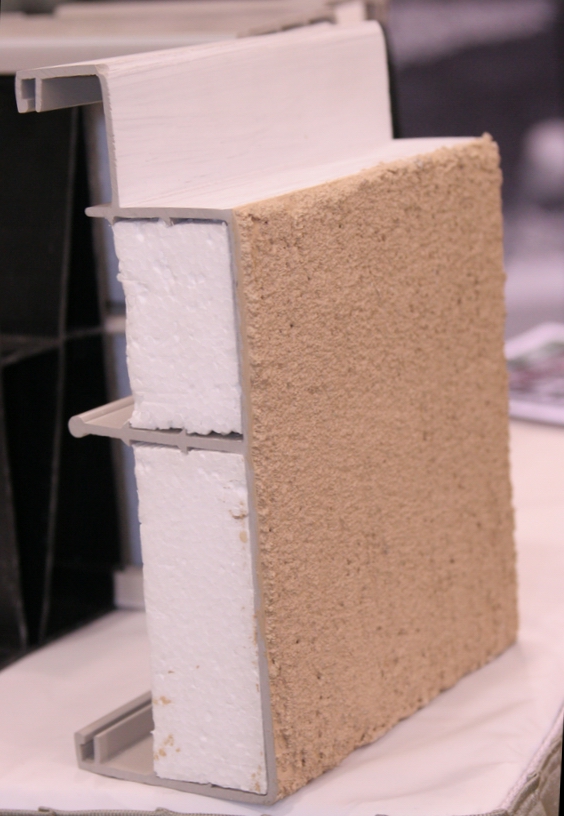
A solution in search of a problem? It depends.
Slab on grade construction is extremely common in the southeast and southwest US because it’s a fast, affordable way to get out of the ground and into the house. Slabs are also a great way to incorporate hydronic heating into a house.
Slab foundations can be energy sieves if not insulated on the outside with rigid foam. Both heat and cold can penetrate deep into a house through an un-insulated slab edge in summer and winter. The foam has to be covered with something to protect it from impact and insects, but also to look good. This is often done with three-coat stucco or a synthetic stucco topcoat. Installing rigid foam around the perimeter of a foundation can be time consuming. One way to speed the process is with a product called Energy Edge.
PVC concrete form protects foam insulation
Energy edge is a PVC form with integral 2 in. expanded polystyrene (EPS) foam board (R-8). It forms and insulates the slab while protecting the insulation. The PVC is recycled from post-industrial waste — floor scraps.
Instead of setting up 2×8 forms, adding foam, pouring the concrete, and then stripping the forms, with Energy Edge, you set up the forms and pour. Installation is a lot faster and easier than the alternative too. “This product is ideal for sitting on top of a concrete block stem wall because, assuming you put foam under the slab, it encapsulates the slab and removes the need to add foam to the outside of the foundation.” says consulting editor Michael Chandler, a builder in Chapel Hill North Carolina. “And the top edge of the form is great for screeding the slab — The concrete guys are gonna love this stuff.”
But the shiny surface that the concrete guys are gonna love, is going to present problems for the stucco guys and gals. We asked Mike to try out Energy Edge for us because he does a lot of radiant slabs connected to solar panels in his houses. Interestingly, when Mike saw the form, he was excited for a different reason than we expected— “That will be perfect for garage door openings.” Normally, Mike’s slabs are more than eight inches above the ground, so he uses either concrete block or modified ICFs to build up to the right height. But at large door openings, in heated buildings, foam doesn’t stand up well.
When using concrete block, Chandler typically insulates under the slab and inside the block. He uses a 4x8x16 block on edge to create the forms and support the exterior walls, running foam inside the block, pinned to the gravel.
An easier way is to cut away the inside of an ICF and use it atop the block stem wall. The ICF and the block are then covered with wire mesh and stucco. Energy Edge doesn’t seem to have any problems to solve here, and in fact makes finishing the outside a little harder.
Stucco doesn’t stick to PVC
Chandler likes to use hard coat stucco to finish his slab foundations because it is more durable and much cheaper than synthetic stucco coatings. The problem is bridging the two materials—stucco won’t stick to the smooth PVC surface. While synthetic stucco can bridge the two different materials (PVC and concrete block) hard coat stucco needs a lath substrate to stick to the PVC.
Available in 12 ft. lengths
Contact: www.energyedgeform.com
Weekly Newsletter
Get building science and energy efficiency advice, plus special offers, in your inbox.















0 Comments
Log in or create an account to post a comment.
Sign up Log in